Explore the dynamic world of Japanese cosmetics with Takashi Minamiyama, the Representative Director and President of NAKAGAWA. In this insightful interview conducted by The Worldfolio, Minamiyama delves into the strategies that have allowed Japanese cosmetic firms to maintain leadership in a competitive global market. From the meticulous emphasis on quality ingrained in Japanese culture to navigating demographic challenges through product diversification and international expansion, Minamiyama provides a comprehensive overview of the beauty industry's evolution. He gains insights into the company's response to the digital shift, its commitment to sustainability, and plans for future growth, offering a unique perspective on the intersection of tradition, innovation, and global business in the beauty sector.

Over the past few decades, there has been an emergence in regional manufacturers emulating the Japanese success model at more affordable costs and generally achieving higher effectiveness rates. Particularly notable is the cosmetic industry, where K-beauty poses a significant challenge to J-beauty, especially with the global success of K-pop. Despite this, Japanese firms continue to maintain their leadership in the cosmetic industry. What strategies or factors do you believe have enabled Japanese cosmetic firms to sustain their leadership amidst intense regional competition?
The global phenomenon of K-beauty has gained traction in the Japanese market. Concurrently, Chinese beauty products are also making their way into Japan, encountering minimal resistance to use, particularly as younger generations exhibit openness to novel cosmetics. However, in the professional hair care products sector, where our business operates, the entry barrier for overseas companies is formidable. Despite attempts by Korean companies to penetrate the Japanese market, they've faced challenges due to Japan's stringent quality standards. Japanese consumers prioritize product quality, leading manufacturers to meticulously oversee raw material selection, procurement, final production, and packaging. The Japanese exhibit an intricate passion for product manufacturing, emphasizing both quality and the aesthetics of packaging.
The appreciation for aesthetics plays a pivotal role in crafting high-quality products. In Japan, this perspective isn't limited to upper management; it permeates throughout every level of the workforce. The commitment to delivering the utmost quality and aesthetic appeal is a shared standard deeply embedded in Japanese culture. The educational system reinforces the value of providing products of the highest quality. Overseas container and packaging companies often note that Japanese standards demand an 'over-quality' approach. In the manufacturing process of Japan even minor imperfections, such as small scratches or misprints on the packaging, are considered unacceptable. These meticulous standards, deeply ingrained in the Japanese mindset, present a barrier for foreign companies seeking entry into the Japanese market. The stringent requirements for exceptional quality and aesthetics in products, especially within the professional hair care industry, hinder the market share of foreign competitors, including Korean and major European brands. This emphasis on quality not only positions Japanese products competitively on a global scale but also serves as a deterrent for overseas companies attempting to establish a foothold in Japan.
With Japan facing an aging population and projections indicating a potential drop in population below 100 million by 2050, there's concern about labor shortages and a contracting market. How crucial is it for your company to expand its operations overseas to secure long-term business success in light of these demographic challenges?
The population decline poses a significant challenge to both the Japanese community and our company. To adapt to this shrinking market, we've embarked on diversifying our product range. While historically focused on hair care, we've recently expanded into skincare, introducing a new cosmeION skincare line infused with high concentrations of beauty essence. Our sales channels extend through salons, and the availability of high-quality raw materials through the manufacturing of hair care products has made it possible to create such a high-quality undiluted serum.
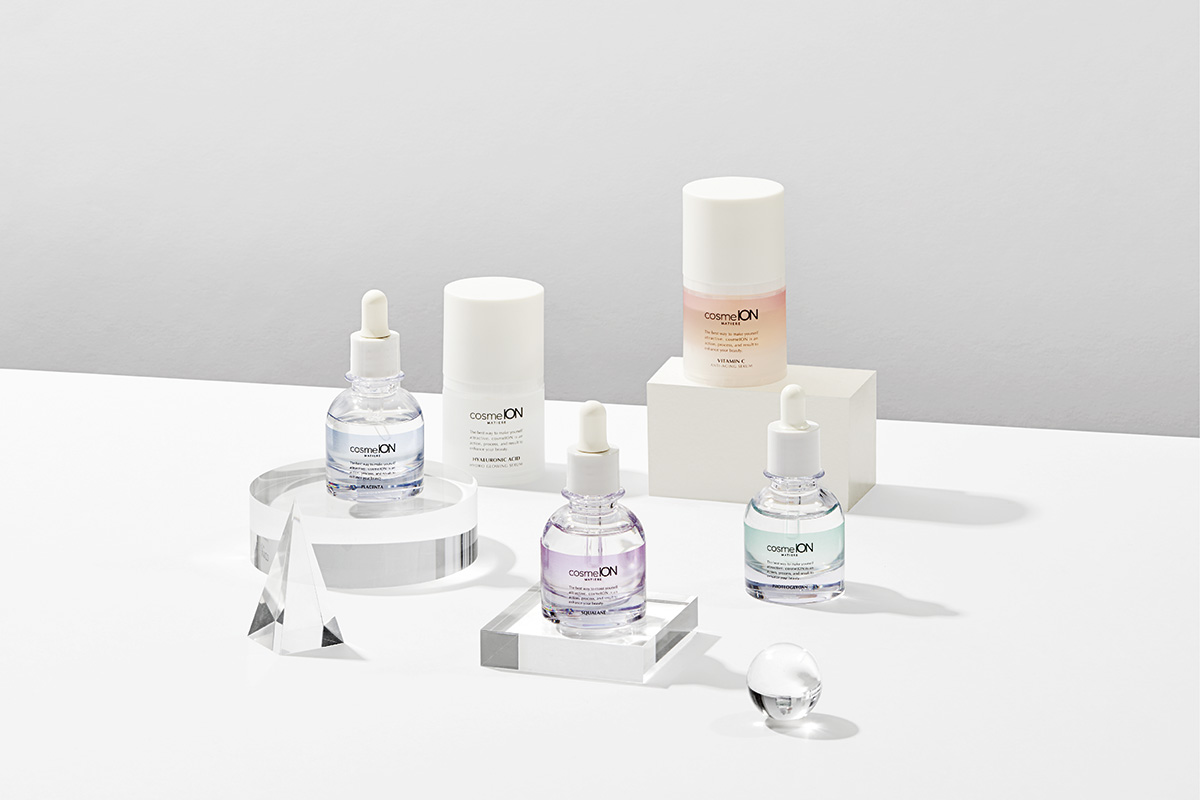
cosmeION series---Our first skincare brand and high-density beauty serum series.
Diversifying our product range for both domestic and overseas markets is pivotal for our growth.
Expanding our international presence is equally critical for sustainability. We're eyeing countries like Indonesia and Vietnam, witnessing population growth and increased wealth, where we've yet to establish operations. Given our products' positioning in the higher-end pricing segment, we aim to focus on emerging markets with considerable purchasing power.
The beauty sector underwent a significant transformation during the COVID-19 pandemic, with the shift towards digital channels and platforms becoming a lasting change. Established brands swiftly adopted online shops, and there was a rise in indie brands selling exclusively online without physical locations. How has your company adjusted to these evolving digital demands? Specifically, what changes have you implemented in your marketing channels and capabilities to align with this digital shift?
Sales channels are undergoing diversification, with consumers increasingly turning to e-commerce for cosmetics and hair care products. Our company recognizes the need to embrace digital transformation. Currently, we're actively engaged in web marketing through social media platforms such as Instagram and TikTok. Personalized advertisements are deployed to reach individuals and promote our products effectively.
Given the prevailing trend, even hair salons are utilizing platforms like Instagram to attract customers. The strategic use of social media is crucial in boosting our product sales. While live commerce may not be as popular in Japan, we are paying attention to the future, and are prioritizing it in our e-commerce strategy. This approach involves direct interaction between beauty salon hairdressers and their audience, seamlessly connecting with product sales—a novel marketing method that holds significant interest for us.
Among your product categories—Color with its 93 different shades, Cold products that reduce damage and enhance hair's natural beauty, and Hair care items for daily repair and maintenance—which category do you believe holds the greatest growth potential? Additionally, are there other product lines, like skincare, where you're considering expanding your expertise?
Hair care and hair color products serve as the cornerstone of our company, both domestically and internationally. However, regulations governing hair colors vary from country to country, and certain regions prohibit the use of ingredients present in Japanese hair color products. Regulations, manufacturing techniques, hairdressers' skills, and consumer attitudes toward hair coloring vary widely from country to country. This diversity poses a challenge when exporting hair color products due to the variations in hair types among different populations. While Asian hair types might share similarities, European hair types, for instance, are markedly different from Japanese hair.
Consequently, our primary focus in overseas exports primarily centers on hair care products. We boast a rich history in the development and production of hair care items right from the raw material stage. Our stringent quality control measures, coupled with meticulous raw material procurement, ensure the high quality of our finished products. The same high standards that have enabled us to thrive in the demanding Japanese market will be our strength as we compete on the international stage.
The variance between European and Asian hair textures is distinct, with European hair typically having five cuticle layers and being generally thicker, whereas Asian hair, though fewer in strands, is denser with around ten cuticle layers. This difference often necessitates powerful products for maintaining Asian hair's appearance of volume without compromising its health. How does your company ensure that its products are effective and suitable for fixing and accommodating various hair types without causing damage, especially for customers with different hair textures?
Our primary market is currently in Japan, and as such, our testing procedures focus exclusively on Japanese hair. However, Japanese hair exhibits a wide range of variations, encompassing differences in weight and damage levels. This diversity in Japanese hair types enables us to offer options that cater to the unique characteristics of foreign hair. Furthermore, preferences for end textures vary not only between countries but also within regions. For instance, in East Asia—such as Korea and China—colder climates tend to favor a heavier finish, whereas Southeast Asian nations, with their hot and warm weather, prefer lighter textures.
These distinctions are not limited to variations across Asian nations but are also observed within individual countries. This diversity allows us to respond effectively to different demands by responding individually with OEM products. Additionally, we have developed a Cold product specifically designed for use with straightening and perming agents. In Japan, we offer multiple lineups of weak to strong agents, but in Mexico, where we export, strong agents are preferred. This diverse lineup for Japanese hair serves as a foundation for addressing the needs of overseas hair types.
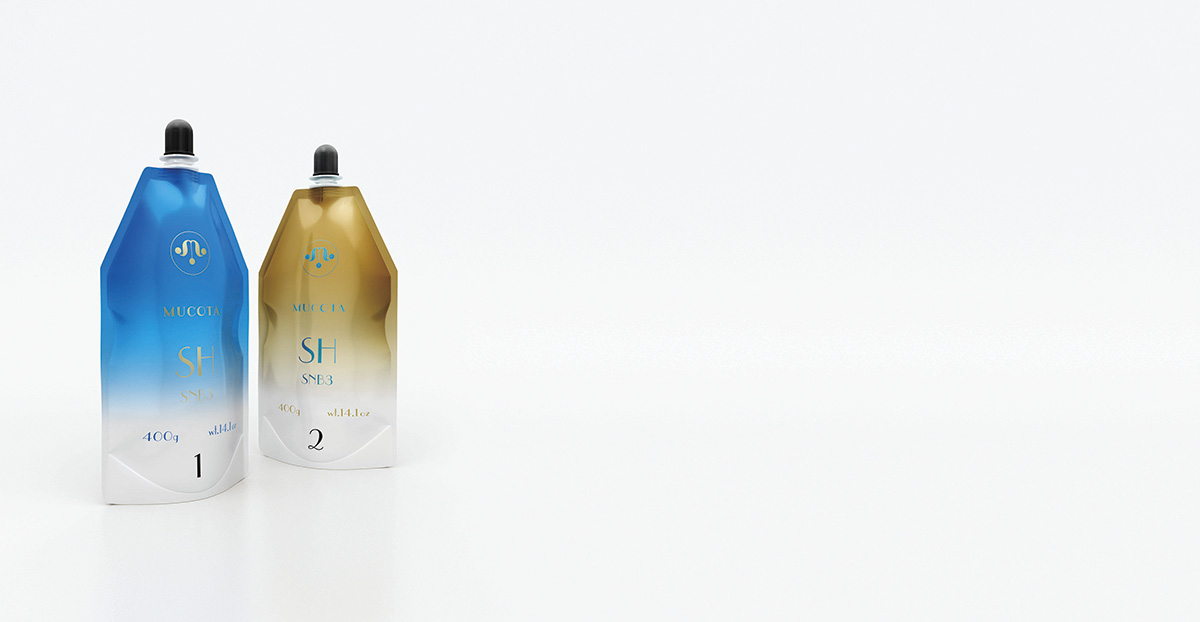
SNB3 from MUCOTA brand ---Hair straightener with national and international acclaim.
There's a distinction between selling products to consumers and professionals in the beauty industry. While consumer sales focus on branding and marketing, selling to professionals involves educating them on product utilization and advantages. Korean brands have excelled in persuading aesthetic professionals to switch to their products, while the Japanese market struggles to efficiently market its smart solutions. Do you agree with this assessment? How does your company approach convincing beauty professionals overseas to consider adopting and testing your brands and designs?
The Japanese approach to product quality revolves around creating items of such high standards that their excellence becomes self-evident. This philosophy aligns with the values of sincerity, diligence, and humility, limiting the tendency to boast about a product's merits. Consequently, the most effective way for Japanese products to break into markets is through social media and user-generated word-of-mouth promotion.
Japanese companies often encounter language barriers, particularly with English, posing challenges when expanding globally. However, advancements in AI technologies and automated translation offer promise in overcoming these language barriers and extending our presence overseas. Recognizing the significance of word-of-mouth promotion, we've been amplifying our social media presence, especially on platforms like Instagram, where we're seeing increased customer engagement and valuable contacts.
With your products centered around hair treatments often associated with heavy chemical usage, there's a notable surge in organic products, expected to grow by around 11% annually until 2030. This trend caters to consumers leaning towards natural-based, sensible products, aligning with a desire for a more organic lifestyle. What's your perspective on this global rise in organic products? Are there plans to develop more such products to cater to your international audience?
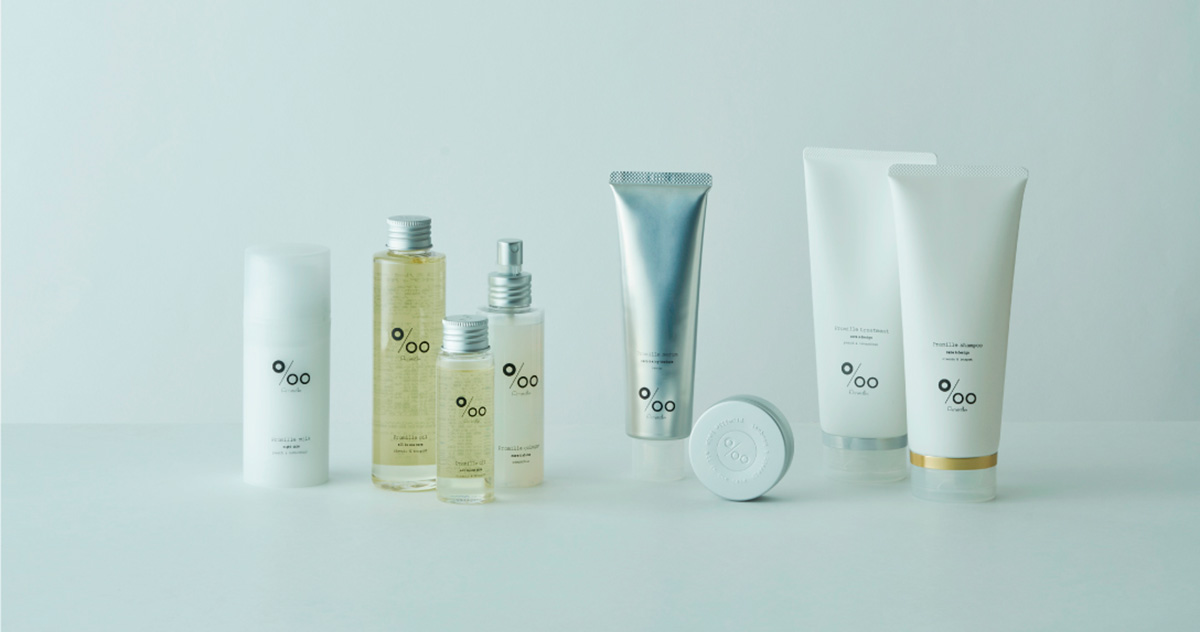
Promille series --- Series made as our first public product, with oil as the first product.
We've observed the global shift towards organic and natural ingredients, prompting us to work on a natural product called Promille. It's a hair oil containing 16 natural ingredients, and it has gained significant recognition in the market. We have already launched a product called "Promille Oil Vegan" that has been certified as Vegan by an international certification organization. Strengthening this brand, both domestically and internationally, is a priority for us. It's worth noting that while Promille Oil Vegan is certified as vegan, our presence in the Japanese vegan hair care market isn't deemed necessary or crucial.
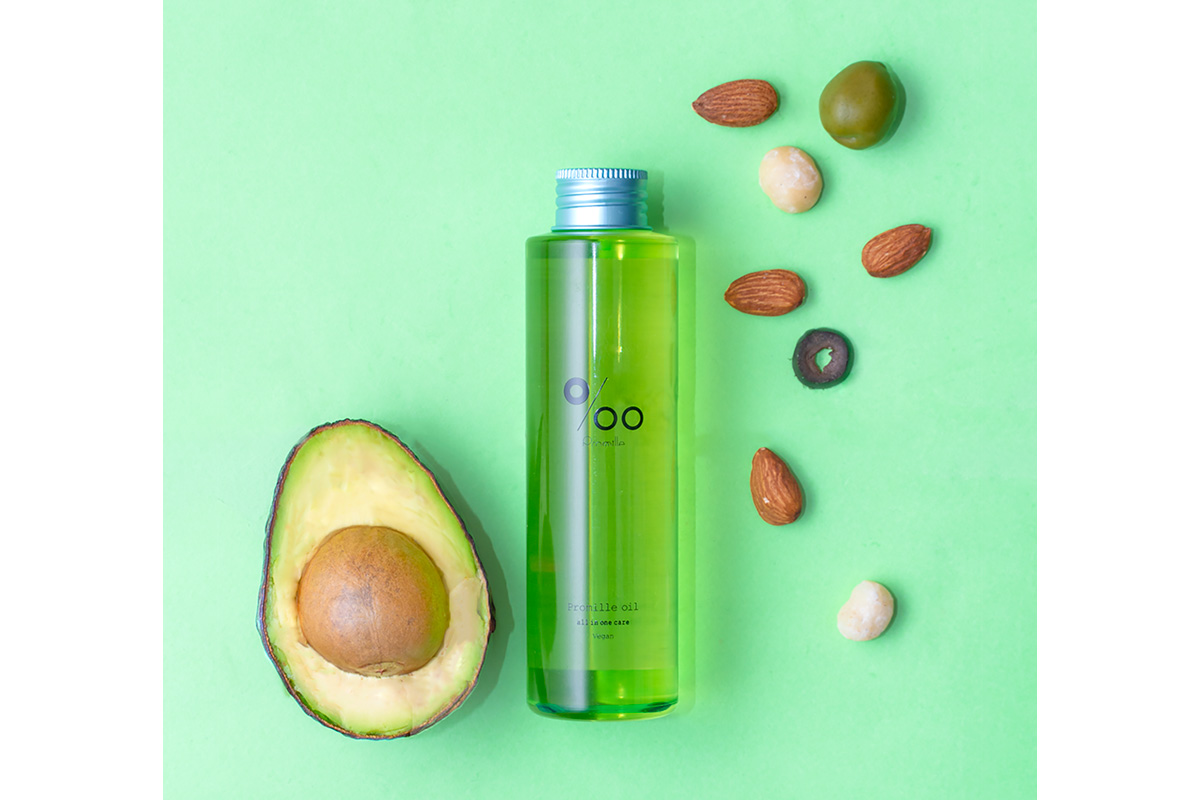
Promille oil Vegan ---Our first Vegan certified product.
We're staunch advocates for vegan and natural certified products, although achieving a 100% natural lineup isn't our primary goal. Some of our professional products, like Color and Cold, necessitate chemicals. For instance, dyeing black Japanese hair involves bleaching with chemicals, while perming and straightening also require chemical treatments. Nonetheless, we aim to offer diverse options to cater to different needs, and Promille Oil Vegan serves as a safe and trustworthy choice within our range for vegan-oriented users.
Natural ingredients aren't universally safe as some individuals might have allergic reactions to them, potentially causing harm. It's crucial to recognize that "natural" doesn't automatically equate to being universally beneficial or risk-free.
Smell holds powerful sway in evoking memories, and certain companies use the fragrance of their products as a branding signature. Japanese products often embody a subtler approach to scent. In the creation of shampoos, oils, and cosmetics, fragrance plays a significant role. How much emphasis does your company place on scent when developing products? What emotions or impressions are you striving to convey or evoke among your customers through the fragrance of your products?
The Japanese perfume market is much smaller compared to Europe's. In that regard, you could say the Japanese market is still developing in terms of scents. However, our oil series involves a base oil with specific added scents like sakura cherry blossoms or kinmokusei. We make it seasonal, so the sakura scent is favored during spring, the chocolate scent is favored during winter, especially Valentine's season, and kinmokusei is popular in the fall. We aim to offer the market both the fragrance and effectiveness of hair oil. The seasonal smell has been one of the big marketing strategies of Japanese cosmetic manufacturers.
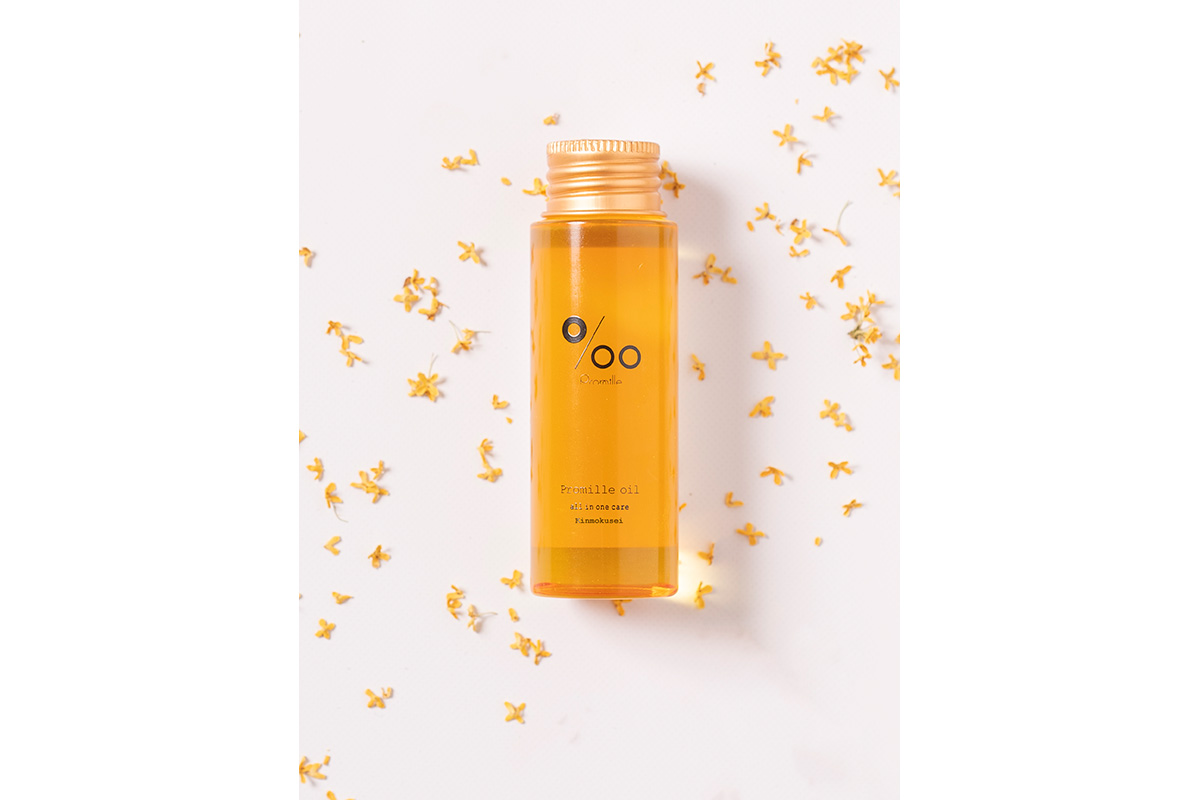
Promille oil Kinmokusei---Kinmokusei scents, the scents of autumn in Japan, and the latest Japanese trends.
Japanese companies are renowned for their innovation and constant introduction of new solutions into the market. Your company, for instance, has developed approximately 93 different hair dye colors, each with unique and intriguing scents. What is the primary focus of your R&D strategy? Additionally, are there any new products or developments you can share with us today?
We've recently shifted our strategy and established our factory. We've developed and manufactured the Promille oil brand in-house. Additionally, we operate our hair beauty salon, named Promille salon, directly in Osaka and Tokyo. Presently, The Promille brand is expanding its sales channels with a focus on directly managed stores (Promille salon).
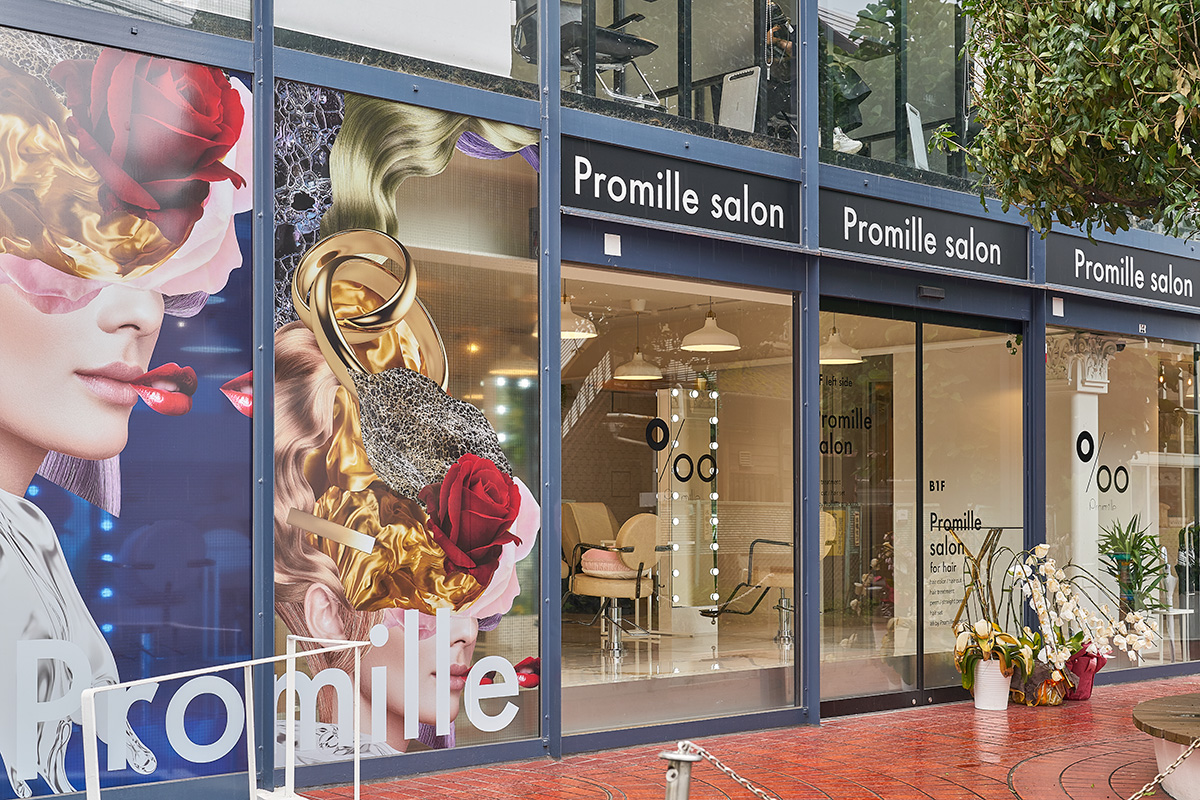
Promille salon Harajuku
Collaboration and seeking local partnerships in overseas markets are highlighted as crucial by industry leaders. Your company, for instance, has been distributing products in the US and Mexico through an agency since 2002. How integral is partnership within your business model? Are you actively seeking new partnerships in other emerging markets, such as Indonesia, Vietnam, or other regions showing promising growth?
Partnerships play a pivotal role in our overseas expansion strategy. Our company currently exports products to foreign countries through appointed agents—specifically, one agent per area in the countries where we operate. We've established group companies in Korea and China, both companies have local presidents. Having local partners who understand the cultural nuances of the business is crucial for our success. As we expand globally, finding partners who align with our values and share an understanding of Japanese culture remains a priority.
Looking ahead five years, what ambitions, objectives, or dreams do you envision achieving by that time? What milestones or goals are you striving toward in the coming years?
As the new President, I'm focused on expanding our product user base, both at home and globally. Simultaneously, I aim to create an environment where our employees consistently express happiness and pride in being part of NAKAGAWA.
For more details, explore their website at https://www.mucota.co.jp/
0 COMMENTS